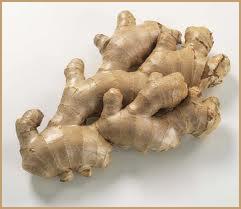Vegetarian Solutions to Conquer Athletes’ Aches
No matter how hard you train for a multiday race, there is bound to be pain involved. If you are new to extreme running, the amount of pain and aching that your muscles present you with after the first day or two of racing may startle you. But it is normal. The first thing to remember is that delayed soreness tends to be at its worst during the first two days. It will pass.
The next thing to remember is that no matter how tough you are, you still need to take care of your body. The average athlete might build in a day or two of rest and recovery for sore muscles after an intense day of exercise. But that isn’t an option during a multiday race.
The next option you might think of is to take a nonsteroidal anti-inflammatory drug (NSAID), like ibuprofen or naproxen sodium. But that probably isn’t a good solution either. Over the long term, NSAIDs can irritate your stomach or even cause bleeding along the gastrointestinal tract — not something that will help your performance! More importantly, though, some studies have shown a special risk for extreme or ultra athletes who take NSAIDs during an ultra or multiday distance run. In extreme running conditions, taking NSAIDs may increase your risk of developing exertional hyponatremia, a condition in which sodium levels in the blood fall to dangerously low levels. Exertional hyponatremia can cause neurological symptoms such as staggered gait, confusion, seizures, and unconsciousness, and can even lead to an increase in intracranial pressure (brain swelling). (See Wharam, et al., “NSAID use increases the risk of developing hyponatremia during an Ironman triathlon,” Medicine and Science in Sports and Exercise, July 2006, http://www.ncbi.nlm.nih.gov/pubmed/16679974?dopt=Abstract; Rosner, Mitchell, “Exercise-associated hyponatremia,” Seminars in Nephrology, May 2009, http://www.sciencedirect.com/science/article/pii/S0270929509000175; and KF, Lilly, “Athletes, NSAID, coxibs, and the gastrointestinal tract,” Current sports medicine in reports, March-April 2010, http://www.ncbi.nlm.nih.gov/pubmed/20220352?dopt=Abstract.)
Consequently, we need to find a way to treat pain and aching muscles without NSAIDs – an all natural method that will, as they say, first do no harm. Here are some options:

Ginger has an anti-inflammatory action
- Massage sore muscles immediately after a race. Some runners use foam massage rollers for this purpose.
- Try using a salve that includes arnica or calendula. Some creams and salves include both. (However, don’t apply essential oils or other soothing salves to broken or irritated skin.) Don’t take arnica internally, unless you are taking a homeopathic version of it. Calendula cream, such as the form used in Traumeel, can offer very effective pain relief, and is being studied as an alternative to NSAIDs. (Schneider, Christian, “Traumeel – an emerging option to nonsteroidal anti-inflammatory drugs in the management of acute musculoskeletal injuries,” International Journal of General Medicine, March 25, 2011, http://www.ncbi.nlm.nih.gov/pmc/articles/PMC3085232/.) Don’t use calendula, though, if you are allergic or sensitive to ragweed, chrysanthemums, marigolds, daisies, or other plants in related families.
- Take a hot Epsom salt bath as soon as you can. Epsom salts are made of magnesium sulfate. Soaking in a hot bath with two to four cups of Epsom salts can soothe aching muscles tremendously. It is safe to take an Epsom salt bath every day, if you find it helpful. Applying heat with a heating pad can also help enormously.
- Try supplementing with ginger throughout the period of time when you are exercising most intensely. Studies are beginning to indicate that ginger, taken orally, can reduce muscle aches and pains caused by exercise. In a 2010 study published in The Journal of Pain, researchers found that taking two grams of raw ginger reduced muscle pain by about 25%, while two grams of cooked ginger reduced pain by an average of 23%. (Warner, Jennifer. “Ginger may soothe aching muscles.” WebMD Health News. Sept. 20, 2010. http://www.medicinenet.com/script/main/art.asp?articlekey=119922) and also improves circulation, but it is classified as a food and is generally considered safe to eat. But if you don’t like the taste of ginger, you can also try applying ginger compresses topically.
- Try supplementing with cayenne, or with its derivative ingredient, capsaicin. Taken orally, cayenne can help to improve circulation, which often reduces pain. Topically, creams that include capsaicin (a component of cayenne) are very useful for reducing muscle pain. Capsaicin works a little differently than other topical pain relievers – it acts as a counter-irritant to the skin, temporarily reducing the levels of a chemical that is used by the body to inform the brain of pain. If anti-inflammatory pain relievers are not helping you, perhaps capsaicin will help. Don’t take cayenne orally or apply it topically if you are allergic to peppers, of course. (University of Maryland Medical Center, “Cayenne,” Complementary Medicine Reference, http://www.umm.edu/altmed/articles/cayenne–000230.htm.)
- Try using aloe vera for pain – orally, in the form of aloe vera juice (but be careful taking it this way, as aloe vera can also act as a laxative) or topically, in creams or gels. Aloe vera, like ginger, is an anti-inflammatory and is being studied for possible use in treating the pain of arthritis and tendonitis. The science is still not in to support its use as an anti-inflammatory for muscle aches caused by intense exercise, but it’s worth a try, especially if you are using aloe in its safest, topical form. (See Swagata Das, et al., “Isolation and characterization of novel protein with anti-fungal and anti-inflammatory properties from Aloe vera leaf gel,” International Journal of Biological Macromolecules, Jan. 2011, http://www.sciencedirect.com/science/article/pii/S0141813010002904; Cowan D., “Oral aloe vera as a treatment for osteoarthritis: a summary,” British Journal of Community Nursing, June 2010, http://www.ncbi.nlm.nih.gov/pubmed/20679979?dopt=Abstract.)
If you explore the world of natural medicine, you’ll find that there are many other natural anti-inflammatories to consider – and many are quite safe (as long as you are not allergic to them), having been used for centuries as foods or as food spices. You may find that some work better for you than others – just be sure not to do your experimenting in the middle of a race!
Brett Warren is a biochemical engineer from Boston, Massachusetts who develops sports supplements for Force Factor. He has done extensive research on nutrition and is an expert on nutraceutical science. He also has a passion for fitness and health. Brett’s work at Force Factor is supplemented by an active family life with plenty of gym time and outdoor recreation.

